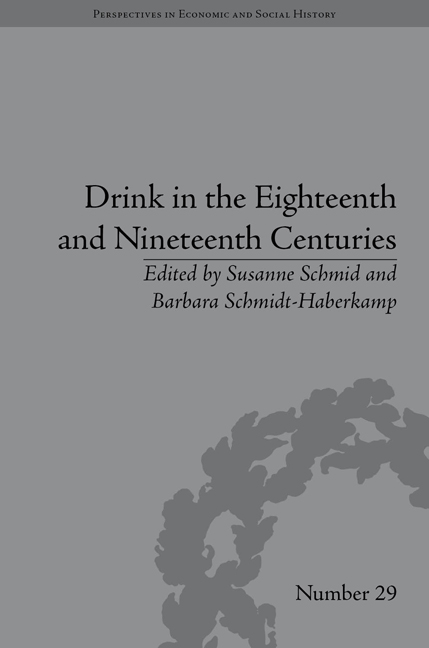Book contents
- Frontmatter
- CONTENTS
- Acknowledgements
- List of Contributors
- List of Figures and Tables
- Introduction
- Part I Ritual and Material Culture
- Part II Institutions and Social Class
- Part III Temperance and the Misery of Alcohol
- Part IV Intoxication and Therapy
- Part V Case Studies: Rum, Cocoa and Magical Potions
- 12 ‘Been to Barbados’: Rum(bullion), Race, the Gaspée and the American Revolution
- 13 A Beverage for the Masses: The Democratization of Cocoa in Nineteenth-Century American Fiction
- 14 The Power of the Potion: From Gothic Horror to Health Drink, or, How the Elixir became a Commodity
- Notes
- Index
14 - The Power of the Potion: From Gothic Horror to Health Drink, or, How the Elixir became a Commodity
from Part V - Case Studies: Rum, Cocoa and Magical Potions
- Frontmatter
- CONTENTS
- Acknowledgements
- List of Contributors
- List of Figures and Tables
- Introduction
- Part I Ritual and Material Culture
- Part II Institutions and Social Class
- Part III Temperance and the Misery of Alcohol
- Part IV Intoxication and Therapy
- Part V Case Studies: Rum, Cocoa and Magical Potions
- 12 ‘Been to Barbados’: Rum(bullion), Race, the Gaspée and the American Revolution
- 13 A Beverage for the Masses: The Democratization of Cocoa in Nineteenth-Century American Fiction
- 14 The Power of the Potion: From Gothic Horror to Health Drink, or, How the Elixir became a Commodity
- Notes
- Index
Summary
Magical potions have been present in human culture ever since humans started to brew herbs and animal skins, taste fermented drinks or cook mushroom, rotten wheat or worms. In the Neolithic burial chamber Barclodiad y Gawres (c. 2000 bc) in north-western Wales, the following brew has been identified:
The central area contained the remains of a fire onto which had been poured ‘a strange stew consisting of wrasse, eel, frog, toad, grass-snake, mouse, shrew & hare’, then covered with limpet shells and pebbles. The significance of this ceremony is unknown.
From shamanism to Greek myths, from fairy tales to Shakespeare's A Midsummer Night's Dream (1590–6) and the Harry Potter (1997–2007) novels, magical drinks have been bridges into unknown dimensions, expanding life and consciousness, producing hallucinations and visions, creating or destroying love, distorting perception, transforming or killing bodies. The borderline between potion and poison is sometimes hard to spot, not only linguistically. Though they seem to be omnipresent in human cultures, the nineteenth century saw a return of these substances in the arts and especially in literature. It is here that we find the best close-up revealing the cultural dynamics at work. While the Victorians embraced the realist novel, fantasy also blossomed and revived archaic memories, and magical potions returned with a vengeance.
- Type
- Chapter
- Information
- Drink in the Eighteenth and Nineteenth Centuries , pp. 167 - 180Publisher: Pickering & ChattoFirst published in: 2014



